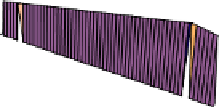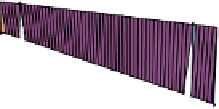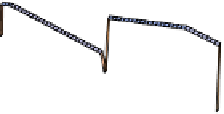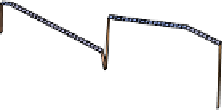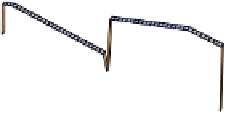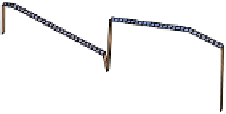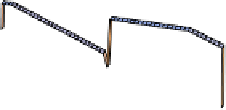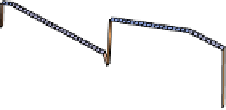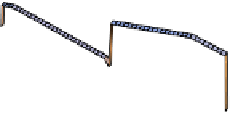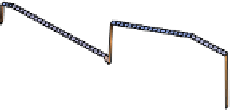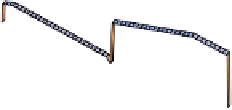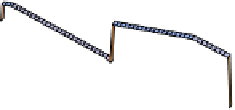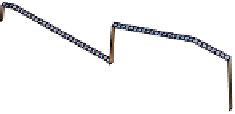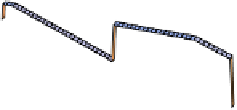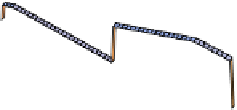Information Technology Reference
In-Depth Information
Room 3
100
60
75
Exit
50
25
40
0
20
20
20
Room 1
Room 2
40
40
60
Fig. 5.
Static floor field (right) for a rather complex geometry (left).
k
S
, the coupling to the static field, can be viewed as a measure of the knowl-
edge about the location of the exit. A large
k
S
implies an almost deterministic
motion to the exit on the shortest possible path. For vanishing
k
S
, the individ-
uals will perform a random walk and just find the exit by chance. So the case
k
S
1 is relevant for processes in dark or smoke-filled rooms where people
do not have full knowledge about the location of the exit. For fixed sensitivity
parameter
k
D
, the evacuation time decrease monotonically with increasing
k
S
(see Fig. 6(a)).
k
S
can be interpreted as some kind of inverse temperature for
the degree of information about the inanimate surrounding.
40000
7000
ks=0.4
ks=1.0
ks=10.0
kd=0.0
kd=10.0
6000
30000
5000
20000
4000
10000
3000
0
2000
0
2
4
0
2
4
6
8
10
ks
kd
Fig. 6.
Averaged evacuation times for a large room with an initial particle density of
ρ
=0
.
3 and
δ
=0
.
3,
α
=0
.
3 for
(a)
fixed
k
D
, and
(b)
fixed
k
S
.
The parameter
k
D
controls the tendency to follow the lead of others. A large
value of
k
D
implies a strong herding behaviour as observed in panics [18]. For
fixed
k
S
(see Fig. 6(b)), the evacuation times converge to maximal values for











































